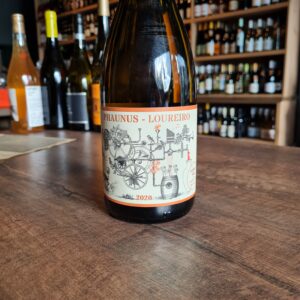-
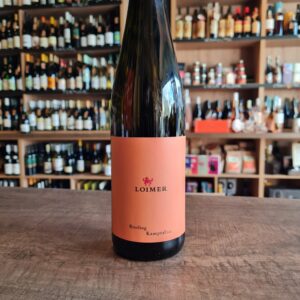 The Loimer estate is located around Langenlois in the sunny Kamptal region of Lower Austria, to the northwest of Vienna. Unlike many Austrian producers who go for a rich, sweet Alsace style, Fred Loimer obtains full ripeness in the vineyard yet ferments to dryness. The resulting wines (like the Loimer Riesling) display his trademark definition, zest and balance on the palate. Fred Loimer realised very early on that his future lay in wine, after his father converted the family farm into a winery. He attended Austria’s renowned Klosterneuburg University and later gained important experience at wineries in Nahe, Germany and in Napa Valley, California. On his return to Langenlois, Fred introduced new methods in the vineyards and winery, with the aim of continually improving the quality of the wine. In 1997, Fred took over the winery from his father and, in 1998, purchased and renovated a historical vaulted brick cellar (a former cellar of the Haindorf Castle) amidst the vines between Langenlois and Zöbing. The wines have been vinified and stored here since 1999. The 60 hectares of vineyards are divided into 100 parcels, planted on seven different soil types (ranging from loess, gravel, clay, sand and slate to Gföhler gneiss, a coarse-grained, metamorphic rock containing quartz, felspar and mica), which bring great complexity to the wines. There is no need to say that the high quality of their soils is crucial for the Loimer Riesling and its minerality. Situated at an altitude of 200-420m above sea level, the south facing vineyards benefit from warm days and cool nights, which encourage the development of the aromatic components in the grapes. The high summer temperatures are mitigated by the River Danube and the Waldviertel (forested area), while the well drained soils mean the vines can form deeply penetrating root systems, thus overcoming even long periods of drought without damage. Since 2006, the vineyard and cellar work has been conducted according to biodynamic principles.
The Loimer estate is located around Langenlois in the sunny Kamptal region of Lower Austria, to the northwest of Vienna. Unlike many Austrian producers who go for a rich, sweet Alsace style, Fred Loimer obtains full ripeness in the vineyard yet ferments to dryness. The resulting wines (like the Loimer Riesling) display his trademark definition, zest and balance on the palate. Fred Loimer realised very early on that his future lay in wine, after his father converted the family farm into a winery. He attended Austria’s renowned Klosterneuburg University and later gained important experience at wineries in Nahe, Germany and in Napa Valley, California. On his return to Langenlois, Fred introduced new methods in the vineyards and winery, with the aim of continually improving the quality of the wine. In 1997, Fred took over the winery from his father and, in 1998, purchased and renovated a historical vaulted brick cellar (a former cellar of the Haindorf Castle) amidst the vines between Langenlois and Zöbing. The wines have been vinified and stored here since 1999. The 60 hectares of vineyards are divided into 100 parcels, planted on seven different soil types (ranging from loess, gravel, clay, sand and slate to Gföhler gneiss, a coarse-grained, metamorphic rock containing quartz, felspar and mica), which bring great complexity to the wines. There is no need to say that the high quality of their soils is crucial for the Loimer Riesling and its minerality. Situated at an altitude of 200-420m above sea level, the south facing vineyards benefit from warm days and cool nights, which encourage the development of the aromatic components in the grapes. The high summer temperatures are mitigated by the River Danube and the Waldviertel (forested area), while the well drained soils mean the vines can form deeply penetrating root systems, thus overcoming even long periods of drought without damage. Since 2006, the vineyard and cellar work has been conducted according to biodynamic principles. -
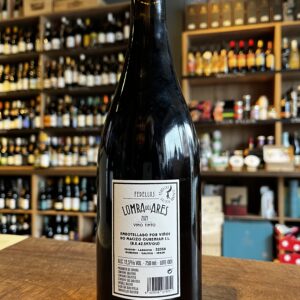
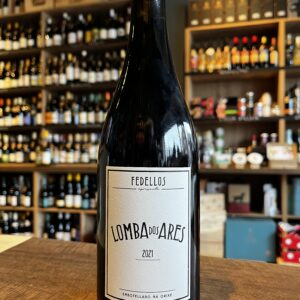 Lomba dos Ares is a Spanish take on Beaujolais, a blend of native grapes - Mencía, Mouratón, Garnacha Tintorera, Caiño and Bastardo - that captures the essence of Ribeira Sacra with a perfumed nose and plenty of freshness and finesse on the palate. It's not surprising that beautiful places like this produce soulful wines. Red fruits, orange peel, violets and cedar come in layers making this delicious to sip solo but also very versatile with charcuterie, roasted vegetable or pork dishes.
Lomba dos Ares is a Spanish take on Beaujolais, a blend of native grapes - Mencía, Mouratón, Garnacha Tintorera, Caiño and Bastardo - that captures the essence of Ribeira Sacra with a perfumed nose and plenty of freshness and finesse on the palate. It's not surprising that beautiful places like this produce soulful wines. Red fruits, orange peel, violets and cedar come in layers making this delicious to sip solo but also very versatile with charcuterie, roasted vegetable or pork dishes. -
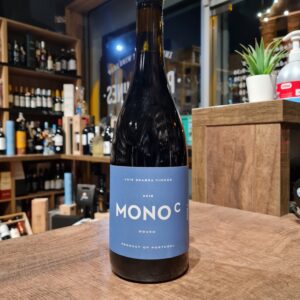 Luis Seabra is a producer that is at the forefront of the “new Douro” movement. Rather than making table wines that are, for all intents and purposes, “Little Ports,” Luis has taken a more balanced, restrained approach to winemaking in the oldest demarcated wine region in the world. His guiding principles are showcasing terroir and nuance above power and extraction. Bright, mineral driven and elegant, Luis’ wines are typically exposés of soil type. With the Mono C, he is taking a look at a particular variety – in this case, Castelão. While Castelão is a grape that is typically found further south in Portugal, Luis has found a mono-planted plot of the light-skinned grape in the Douro and is working his magic to craft a wine of unparalleled delicacy and elegance. Would pair it with charcuterie, grilled pork dishes, roasted poultry
Luis Seabra is a producer that is at the forefront of the “new Douro” movement. Rather than making table wines that are, for all intents and purposes, “Little Ports,” Luis has taken a more balanced, restrained approach to winemaking in the oldest demarcated wine region in the world. His guiding principles are showcasing terroir and nuance above power and extraction. Bright, mineral driven and elegant, Luis’ wines are typically exposés of soil type. With the Mono C, he is taking a look at a particular variety – in this case, Castelão. While Castelão is a grape that is typically found further south in Portugal, Luis has found a mono-planted plot of the light-skinned grape in the Douro and is working his magic to craft a wine of unparalleled delicacy and elegance. Would pair it with charcuterie, grilled pork dishes, roasted poultry -
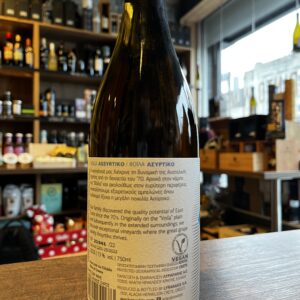
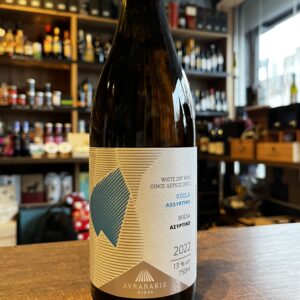 Anyone that has been to Greece or has interest in wines have come by the grape Assyrtiko . In the last few years, wines from Greece, in particularly this indigenous grape, have gotten the status as a world-class wine and prices have begun to rise especially from the Santorini region. This Vegan Assyrtiko from the Lyrarakis estate is one of them and it is still in the affordable range and fortunately, your everyday Assyrtiko needs can still be catered for. Being from east Crete rather than Santorini means prices are still competitive. Think down the lines of getting a wine from the Touraine region rather than the heart of the Loire Valley. Lyrarakis on Crete are a brilliant winery with a focus on indigenous Greek varieties. Their rendition of Assyrtiko is broader and more approachable than some of the tightly-wound examples on Santorini, but it's no less drinkable for that. It is in fact an ideal place to grow the white grape Assyrtiko. Both the Mediterranean breezes and the altitude of the Lyrarakis vineyards allows the grapes to have a much longer ripening period, preserving the grapes aromatics and acidity resulting in a wine with wonderful floral freshness, crisp citrus notes and a delicate mineral finish. Yamas!
Anyone that has been to Greece or has interest in wines have come by the grape Assyrtiko . In the last few years, wines from Greece, in particularly this indigenous grape, have gotten the status as a world-class wine and prices have begun to rise especially from the Santorini region. This Vegan Assyrtiko from the Lyrarakis estate is one of them and it is still in the affordable range and fortunately, your everyday Assyrtiko needs can still be catered for. Being from east Crete rather than Santorini means prices are still competitive. Think down the lines of getting a wine from the Touraine region rather than the heart of the Loire Valley. Lyrarakis on Crete are a brilliant winery with a focus on indigenous Greek varieties. Their rendition of Assyrtiko is broader and more approachable than some of the tightly-wound examples on Santorini, but it's no less drinkable for that. It is in fact an ideal place to grow the white grape Assyrtiko. Both the Mediterranean breezes and the altitude of the Lyrarakis vineyards allows the grapes to have a much longer ripening period, preserving the grapes aromatics and acidity resulting in a wine with wonderful floral freshness, crisp citrus notes and a delicate mineral finish. Yamas! -
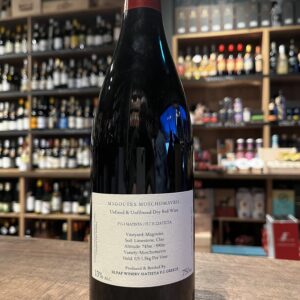
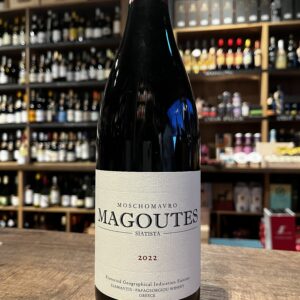 Magoutes winery, run by Dimitris Diamantis, is located in the old but forgotten region of Siatista in the mountains of northern Greece. Here vineyards have been abandoned and then revived centuries ago. The city of Siatista is nestled on the slopes of Mount Siniatsiko. The soils of the vineyards are limestone-based which adds elegance and acidity to this ruby-hued red wine. Moshomavro means 'black muscat' but is no relation in parentage or flavour! Lovers of of Beaujolais or Italian reds like pelaverga, rossesse or schiava will find a lot to appreciate in moschómavro, a variety historically interplanted with xinómavro and others in the western Macedonian mountains. Make sure to open this well in advance to get the full show, as a couple of hours of air will bring out its best qualities. It’s the ideal wine to pair with a cheese and meat board or fish. It’s also lovely with a slight chill on a warm day.
Magoutes winery, run by Dimitris Diamantis, is located in the old but forgotten region of Siatista in the mountains of northern Greece. Here vineyards have been abandoned and then revived centuries ago. The city of Siatista is nestled on the slopes of Mount Siniatsiko. The soils of the vineyards are limestone-based which adds elegance and acidity to this ruby-hued red wine. Moshomavro means 'black muscat' but is no relation in parentage or flavour! Lovers of of Beaujolais or Italian reds like pelaverga, rossesse or schiava will find a lot to appreciate in moschómavro, a variety historically interplanted with xinómavro and others in the western Macedonian mountains. Make sure to open this well in advance to get the full show, as a couple of hours of air will bring out its best qualities. It’s the ideal wine to pair with a cheese and meat board or fish. It’s also lovely with a slight chill on a warm day. -
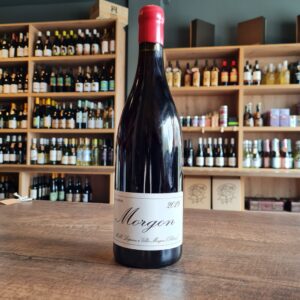 Domaine Marcel Lapierre Morgon is a natural red wine made by Domaine Marcel Lapierre with the Gamay variety in the AOC Morgon (Burgundy). Domaine Marcel Lapierre is one of the pioneer wineries that has been making natural wines since Marcel Lapierre, a true pacesetter among Beaujolais producers, took over the Villié-Morgon estate in 1973. With his work philosophy, he was committed to combining traditional best practices with new technologies so that his wines would be a true reflection of the landscape. In 1981, under the strong influence of natural wine master Jules Chavet, Marcel was among the first to produce wines of minimal intervention, without adding SO2 or any other substance. Domaine Marcel Lapierre Morgon 2018 is a fruity red wine with aromas of cherry, violet and liquorice, covered with a forest freshness and refreshing balsamic tones. On the palate it is structured, fresh and sweet. It begins with a sharp acidity that blends with the touches of fruit and liquorice and the intense minerality. This is a refreshing red, perfect for spring and summer; recommended to drink with charcuterie, paté, cheese, roast ham, roast lamb, roast chicken and turkey and with spicy Thai and Chinese dishes. Serve at the lower end of the suggested temperature range if you like your light red wines served cooler like the French
Domaine Marcel Lapierre Morgon is a natural red wine made by Domaine Marcel Lapierre with the Gamay variety in the AOC Morgon (Burgundy). Domaine Marcel Lapierre is one of the pioneer wineries that has been making natural wines since Marcel Lapierre, a true pacesetter among Beaujolais producers, took over the Villié-Morgon estate in 1973. With his work philosophy, he was committed to combining traditional best practices with new technologies so that his wines would be a true reflection of the landscape. In 1981, under the strong influence of natural wine master Jules Chavet, Marcel was among the first to produce wines of minimal intervention, without adding SO2 or any other substance. Domaine Marcel Lapierre Morgon 2018 is a fruity red wine with aromas of cherry, violet and liquorice, covered with a forest freshness and refreshing balsamic tones. On the palate it is structured, fresh and sweet. It begins with a sharp acidity that blends with the touches of fruit and liquorice and the intense minerality. This is a refreshing red, perfect for spring and summer; recommended to drink with charcuterie, paté, cheese, roast ham, roast lamb, roast chicken and turkey and with spicy Thai and Chinese dishes. Serve at the lower end of the suggested temperature range if you like your light red wines served cooler like the French -
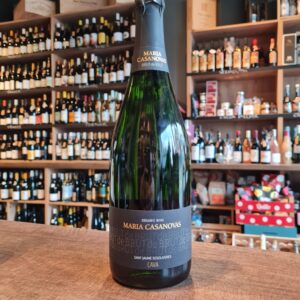 The Bodega or Cava Maria Casanovas is located in the heart of the Penedès, in Sant Sadurní d'Anoia, the centre of Cava production. It is owned by the Casanovas family and managed by three children of Maria Casanovas. Jordi and Jacint are responsible for the vineyards and the cellar, Rosa for administration and marketing. Maria Casanovas' parents were already grape growers and sold their produce to the large cava wineries. Cava has been produced under their own name since 1984. 13 hectares are owned and planted with the local grape varieties Xarel-lo, Parellada and Macabeo (Viura) as well as the international varieties Pinot Noir and Chardonnay. Maria Casanovas was one of the pioneers who introduced Pinot Noir to Penedès. Fossils can be found occasionally in the calcareous, gravelly clay soils. Food pairing suggestion: Apéro pastries, Tagliatelle al tartufo, Vegetable pie, Salad with vegetables, pulses, pasta
The Bodega or Cava Maria Casanovas is located in the heart of the Penedès, in Sant Sadurní d'Anoia, the centre of Cava production. It is owned by the Casanovas family and managed by three children of Maria Casanovas. Jordi and Jacint are responsible for the vineyards and the cellar, Rosa for administration and marketing. Maria Casanovas' parents were already grape growers and sold their produce to the large cava wineries. Cava has been produced under their own name since 1984. 13 hectares are owned and planted with the local grape varieties Xarel-lo, Parellada and Macabeo (Viura) as well as the international varieties Pinot Noir and Chardonnay. Maria Casanovas was one of the pioneers who introduced Pinot Noir to Penedès. Fossils can be found occasionally in the calcareous, gravelly clay soils. Food pairing suggestion: Apéro pastries, Tagliatelle al tartufo, Vegetable pie, Salad with vegetables, pulses, pasta -
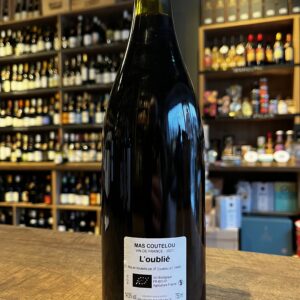
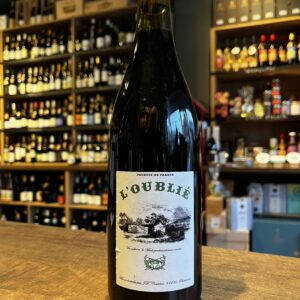 The varieties Jeff grows are all from the south of France, and on his estate located in Puimuisson (a few kilometers from Beziers), the vines coexist with thousands of fruit trees to promote biodiversity. From this base, each vintage offers a range of unique cuvées. Wines he invents at any time following his intuition and that only go onto the market when he considers them representative of the character of the place. Specifically, Mas Coutelou L'Oublié Version is a wine made from Syrah, Carignan and Cinsault vines.
The varieties Jeff grows are all from the south of France, and on his estate located in Puimuisson (a few kilometers from Beziers), the vines coexist with thousands of fruit trees to promote biodiversity. From this base, each vintage offers a range of unique cuvées. Wines he invents at any time following his intuition and that only go onto the market when he considers them representative of the character of the place. Specifically, Mas Coutelou L'Oublié Version is a wine made from Syrah, Carignan and Cinsault vines. -
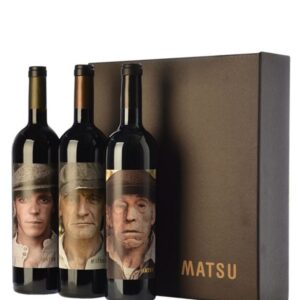 Matsu, the Japanese word for 'wait', pays homage to the generations of devoted wine makers. The images of the real-life wine-producers decorate the bottle and represent the essence of each of the wines. Picaro means 'rogue' or 'rascal', and this rapscallion of a wine is a youthful interpretation of the Toro region's style. El Recio translates as 'the tough guy', and is a more serious, mature wine, made from the product of some of Toro's oldest vines. 'The Old One' of the Matsu range, made from the fruit of selected Tinta de Toro vines, averaging 110 years of age - presented in an original gift box.
Matsu, the Japanese word for 'wait', pays homage to the generations of devoted wine makers. The images of the real-life wine-producers decorate the bottle and represent the essence of each of the wines. Picaro means 'rogue' or 'rascal', and this rapscallion of a wine is a youthful interpretation of the Toro region's style. El Recio translates as 'the tough guy', and is a more serious, mature wine, made from the product of some of Toro's oldest vines. 'The Old One' of the Matsu range, made from the fruit of selected Tinta de Toro vines, averaging 110 years of age - presented in an original gift box. -
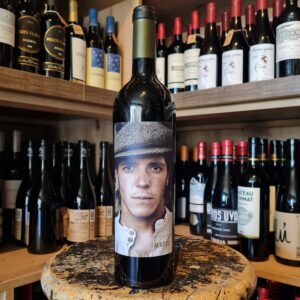 Picaro means 'rogue' or 'rascal'. I have always called it the young lad, as they also have 'El Recio' (the middle aged man) which is Matsu's idea for a reserva wine and the Gran Reserva, 'El Viejo' (old man just in case you didn't know). Bodegas Matsu is situated in the Toro region, right beside the Rueda region (known for the famous Verdejos). Toro wines are predominantly made of Tinta de Toro (tempranillo in this area of Spain) and are well known to be a mouthful of strength and personality due to its poor soil and hot summers. These vines in particular are 90 years old and are cultivated using the biodynamic techniques. Although the more conventional wines of this region are quite sharp, Matsu's wine range has achieved smoothness and elegance. Additionally, the clever thinking behind the labels means that they cater to a wide audience. I would recommend this red any day of the week.
Picaro means 'rogue' or 'rascal'. I have always called it the young lad, as they also have 'El Recio' (the middle aged man) which is Matsu's idea for a reserva wine and the Gran Reserva, 'El Viejo' (old man just in case you didn't know). Bodegas Matsu is situated in the Toro region, right beside the Rueda region (known for the famous Verdejos). Toro wines are predominantly made of Tinta de Toro (tempranillo in this area of Spain) and are well known to be a mouthful of strength and personality due to its poor soil and hot summers. These vines in particular are 90 years old and are cultivated using the biodynamic techniques. Although the more conventional wines of this region are quite sharp, Matsu's wine range has achieved smoothness and elegance. Additionally, the clever thinking behind the labels means that they cater to a wide audience. I would recommend this red any day of the week. -
 Menina d’Uva is a small winery located in Uva, a remote village in the quiet and desolate countryside of the Northeast of Portugal. Female winemaker Aline Domingues moved from Paris to this area from which her parents had emigrated to Paris to give their children better opportunities. A controversial move within the family but one that I wholeheartedly support. Aline clearly is a talented winemaker crafting beautifully pure wines. Made from 70% red grapes (including Bastardo, known in the Jura as Trousseau) and 30% white grapes including Malvasia and white Bastardo. It’s still a hearthy red that’s crispy and refreshing; cherries, pomegranate with a beautiful smell of the forest. Highly recommended.
Menina d’Uva is a small winery located in Uva, a remote village in the quiet and desolate countryside of the Northeast of Portugal. Female winemaker Aline Domingues moved from Paris to this area from which her parents had emigrated to Paris to give their children better opportunities. A controversial move within the family but one that I wholeheartedly support. Aline clearly is a talented winemaker crafting beautifully pure wines. Made from 70% red grapes (including Bastardo, known in the Jura as Trousseau) and 30% white grapes including Malvasia and white Bastardo. It’s still a hearthy red that’s crispy and refreshing; cherries, pomegranate with a beautiful smell of the forest. Highly recommended. -
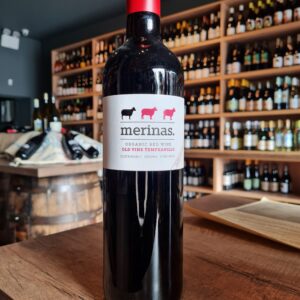 The Mesta was a powerful alliance of shepherds in medieval Castile, who controlled the “cañadas”: traditional rights-of-way for migrating sheep. to this day, the “cañadas” are protected from being blocked or built upon. Our vineyards are nestled deep in the land of The Mesta, and are still passed over by flocks on their annual migration – a reminder of ancient rights, and a cultural cue for continued co-existence with nature. Produced from organically farmed vineyards in Uclés (Castile, Spain). Managed as an integrated ecosystem and studded with centenary oak trees. The continental climate with sunny days and cool nights allow us to achieve intense fruit and excellent varietal definition, while retaining remarkable freshness Mesta Tempranillo is a vibrant and juicy, unoaked red wine, showing great purity and the typicity of high-altitude Tempranillo, with expressive and well-defined aromas of red berries, rosemary and a touch of liquorice. Bright ruby red colour. Fresh and with an excellent persistence on the palate, with round texture and a satisfyingly dry finish. Very versatile, medium-bodied food wine, excellent with tapas, grilled meat and pasta.
The Mesta was a powerful alliance of shepherds in medieval Castile, who controlled the “cañadas”: traditional rights-of-way for migrating sheep. to this day, the “cañadas” are protected from being blocked or built upon. Our vineyards are nestled deep in the land of The Mesta, and are still passed over by flocks on their annual migration – a reminder of ancient rights, and a cultural cue for continued co-existence with nature. Produced from organically farmed vineyards in Uclés (Castile, Spain). Managed as an integrated ecosystem and studded with centenary oak trees. The continental climate with sunny days and cool nights allow us to achieve intense fruit and excellent varietal definition, while retaining remarkable freshness Mesta Tempranillo is a vibrant and juicy, unoaked red wine, showing great purity and the typicity of high-altitude Tempranillo, with expressive and well-defined aromas of red berries, rosemary and a touch of liquorice. Bright ruby red colour. Fresh and with an excellent persistence on the palate, with round texture and a satisfyingly dry finish. Very versatile, medium-bodied food wine, excellent with tapas, grilled meat and pasta. -
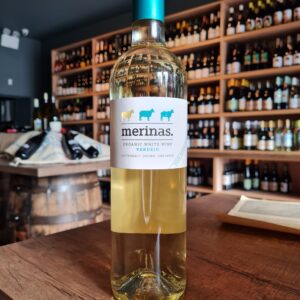 Merinas comes from the Bodegas y Viñedos Fontana, located in the town of Cuenca. The name Merinas is also a reference to the merino sheep, the most famous sheep breed in the world which, incidentally, sometimes seems to scurry around in the vines. A crisp, aromatic white wine, showing great purity of aromas and a precise expression of the Verdejo grape. Bright, pale straw yellow, with intense, fresh notes of grass, fennel and white pepper. Dry but juicy on the palate, with excellent balance, a moderate alcohol of only 12,5% with a persistent, slightly mineral finish. Excellent as an aperitif and with pasta, salads, poultry and fish dishes.
Merinas comes from the Bodegas y Viñedos Fontana, located in the town of Cuenca. The name Merinas is also a reference to the merino sheep, the most famous sheep breed in the world which, incidentally, sometimes seems to scurry around in the vines. A crisp, aromatic white wine, showing great purity of aromas and a precise expression of the Verdejo grape. Bright, pale straw yellow, with intense, fresh notes of grass, fennel and white pepper. Dry but juicy on the palate, with excellent balance, a moderate alcohol of only 12,5% with a persistent, slightly mineral finish. Excellent as an aperitif and with pasta, salads, poultry and fish dishes. -
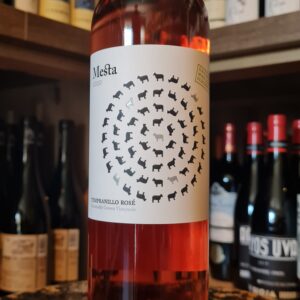 Mesta is a range of organically and sustainably grown single varietal wines, which stylishly showcase the Spanish wine revolution under the symbol of the Mesta. Mesta was a powerful alliance of sheep ranchers in medieval Castile, who controlled the cañadas: the traditional rights of way for migrating sheep. To this day the cañadas are protected from being blocked or built upon, a reminder of ancient rights and a model of coexistence with nature. This modern range, from the fashionable DO Uclés in central Castile, offers wines of great purity and varietal typicity.A versatile wine which accompanies spicy dishes perfectly, Asian curries, seafood risotto or a light salad with grilled prawns. Rosé wines are in fashion not just in the summer but also throughout the year, and this beautiful Mesta Rosé is a serious contender in the Rosé world. Especially at this price!!!
Mesta is a range of organically and sustainably grown single varietal wines, which stylishly showcase the Spanish wine revolution under the symbol of the Mesta. Mesta was a powerful alliance of sheep ranchers in medieval Castile, who controlled the cañadas: the traditional rights of way for migrating sheep. To this day the cañadas are protected from being blocked or built upon, a reminder of ancient rights and a model of coexistence with nature. This modern range, from the fashionable DO Uclés in central Castile, offers wines of great purity and varietal typicity.A versatile wine which accompanies spicy dishes perfectly, Asian curries, seafood risotto or a light salad with grilled prawns. Rosé wines are in fashion not just in the summer but also throughout the year, and this beautiful Mesta Rosé is a serious contender in the Rosé world. Especially at this price!!! -
Out of stock
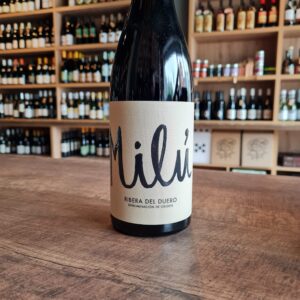 A rich and satisfying Ribera del Duero red, from a quality focussed micro producer Quinta Milú. This is a family run project in the Ribera del Duero from the Asturian viticulturist Germán R. Blanco. A small project which for nearly 10 years now has looked for wines which tell us about where they were born, a small village by the name of La Aguilera situated in the province of Burgos. Germán makes his elegant, fruit-forward wines using foot-treading, wild yeast fermentation and minimal handling. Not filtered, not clarified and not stabilized is his ethos. All his wines share a delicious rusticity, purity of fruit, and incredible freshness. Germán calls this— his flagship wine— a “vino de pueblo”, which translates as “a wine for every day and for everyone.” Pair it with braised meats, steak, game, lamb, root veggies, hard cheese or just have it on its own.
A rich and satisfying Ribera del Duero red, from a quality focussed micro producer Quinta Milú. This is a family run project in the Ribera del Duero from the Asturian viticulturist Germán R. Blanco. A small project which for nearly 10 years now has looked for wines which tell us about where they were born, a small village by the name of La Aguilera situated in the province of Burgos. Germán makes his elegant, fruit-forward wines using foot-treading, wild yeast fermentation and minimal handling. Not filtered, not clarified and not stabilized is his ethos. All his wines share a delicious rusticity, purity of fruit, and incredible freshness. Germán calls this— his flagship wine— a “vino de pueblo”, which translates as “a wine for every day and for everyone.” Pair it with braised meats, steak, game, lamb, root veggies, hard cheese or just have it on its own. -
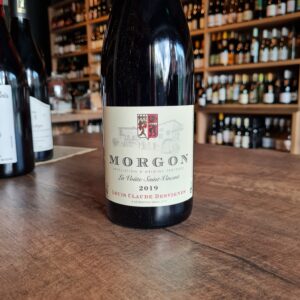 Louis-Claude Desvignes is a family estate that dates back to 1700. The Desvignes range is "La Voûte Saint Vincent", named for the vault or "voûte" of the old family house and for the patron saint of winemakers. It was Louis-Claude who began to turn the estate’s grapes into wine, and now with the reins handed over to his two sons Louis-Benoît and Claude-Emmanuelle Desvignes. It is a blend of certified-organic estate parcels totalling 4.5 hectares in the climat of Douby, which lies in the northeast corner of Morgon along the border of Fleurie. The La Voûte vines average 50 years old and are planted in Douby's typical sandy, decomposed-granite soils. Viticulture and vinification are consistent across all Desvignes wines. In the case of La Voûte, the parcels are all vinified separately.
Louis-Claude Desvignes is a family estate that dates back to 1700. The Desvignes range is "La Voûte Saint Vincent", named for the vault or "voûte" of the old family house and for the patron saint of winemakers. It was Louis-Claude who began to turn the estate’s grapes into wine, and now with the reins handed over to his two sons Louis-Benoît and Claude-Emmanuelle Desvignes. It is a blend of certified-organic estate parcels totalling 4.5 hectares in the climat of Douby, which lies in the northeast corner of Morgon along the border of Fleurie. The La Voûte vines average 50 years old and are planted in Douby's typical sandy, decomposed-granite soils. Viticulture and vinification are consistent across all Desvignes wines. In the case of La Voûte, the parcels are all vinified separately. -
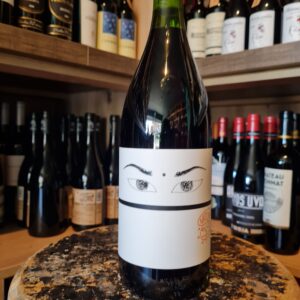 The Nat’Cool project is an innovative concept initiated by Niepoort, in which various producers came together to create light and easy-to-drink wines. This is the original Nat’Cool wine, from the Bairrada region where they are showcasing the elegant side of the Baga grape variety. Hands off wine making, Carbonic Maceration, soft, light expression of Baga. Baga is a touch grape which is very high in tannin and generally needs time to mature and express its delightful floral aromas and fruit character. However, here in the Bairrada with 80-100 year old vines and hands off wine making including carbonic maceration (which generally extracts less tannin), the astringent elements of the Baga grape are tamed and the resulting wine is pure juicy, fresh red with delicious wild berries, floral notes and light body. This wine is great fun, on opening there is a note of spritz but this vanishes quickly, I reckon it is just the wine's youthful spirit leaping from the bottle on its re-acquaintance with oxygen. What follows is very easy, juicy red which can be enjoyed chilled in the summer with a BBQ or at room temp in the autumn with some field mushrooms. The litre bottle and 12.5% abv is fantastic as between two, you have enough wine and not enough booze to make you suffer for it. A great addition to Niepoort portfolio, the wines go from strength to strength.
The Nat’Cool project is an innovative concept initiated by Niepoort, in which various producers came together to create light and easy-to-drink wines. This is the original Nat’Cool wine, from the Bairrada region where they are showcasing the elegant side of the Baga grape variety. Hands off wine making, Carbonic Maceration, soft, light expression of Baga. Baga is a touch grape which is very high in tannin and generally needs time to mature and express its delightful floral aromas and fruit character. However, here in the Bairrada with 80-100 year old vines and hands off wine making including carbonic maceration (which generally extracts less tannin), the astringent elements of the Baga grape are tamed and the resulting wine is pure juicy, fresh red with delicious wild berries, floral notes and light body. This wine is great fun, on opening there is a note of spritz but this vanishes quickly, I reckon it is just the wine's youthful spirit leaping from the bottle on its re-acquaintance with oxygen. What follows is very easy, juicy red which can be enjoyed chilled in the summer with a BBQ or at room temp in the autumn with some field mushrooms. The litre bottle and 12.5% abv is fantastic as between two, you have enough wine and not enough booze to make you suffer for it. A great addition to Niepoort portfolio, the wines go from strength to strength. -
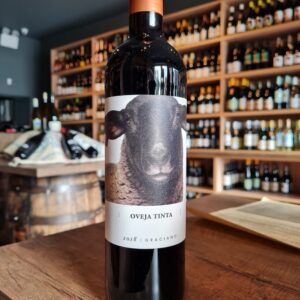 Graciano is one of Spain’s best kept wine secrets - a red grape with thick skins that is a tricky one to grow, which means there’s precious little of it about, even in the vineyards of the Rioja, where it is one of the traditional ingredients in the wine of the same name. This Biio-Organic wine has ruby red color with violet rims. On the nose aromas of wild flowers and ripe fruit, strawberry and blackberries. On the palate it is fresh and fruity, with a good level of acidity and moderate tannins.
Graciano is one of Spain’s best kept wine secrets - a red grape with thick skins that is a tricky one to grow, which means there’s precious little of it about, even in the vineyards of the Rioja, where it is one of the traditional ingredients in the wine of the same name. This Biio-Organic wine has ruby red color with violet rims. On the nose aromas of wild flowers and ripe fruit, strawberry and blackberries. On the palate it is fresh and fruity, with a good level of acidity and moderate tannins. -
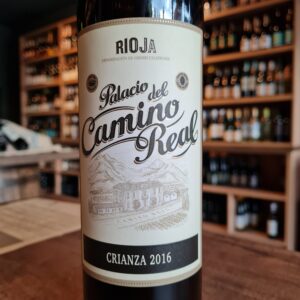 Palacio del Camino Real winery is located in the Najerilla Valley in Rioja. Isolated by the absence of railways and therefore the big wineries, the Najerilla Valley has maintained a tradition of small vineyards, consistently producing fruit of extraordinary freshness and quality. Palacio del Camino Real Crianza is a return to the essence of Rioja wines from the beginning of the 20th century in which Garnacha was the protagonist and a small percentage of white grapes could also be found. They are fresh, elegant, round and friendly wines. Palacio del Camino Real Crianza, is a red wine with an attractive ruby red color that impresses with its complex nose in which the nuances of its aging are perfectly integrated with the freshness and intensity of its chosen grapes. In the mouth it is a wine, it is a fresh, friendly, balanced wine with a long aftertaste.
Palacio del Camino Real winery is located in the Najerilla Valley in Rioja. Isolated by the absence of railways and therefore the big wineries, the Najerilla Valley has maintained a tradition of small vineyards, consistently producing fruit of extraordinary freshness and quality. Palacio del Camino Real Crianza is a return to the essence of Rioja wines from the beginning of the 20th century in which Garnacha was the protagonist and a small percentage of white grapes could also be found. They are fresh, elegant, round and friendly wines. Palacio del Camino Real Crianza, is a red wine with an attractive ruby red color that impresses with its complex nose in which the nuances of its aging are perfectly integrated with the freshness and intensity of its chosen grapes. In the mouth it is a wine, it is a fresh, friendly, balanced wine with a long aftertaste. -
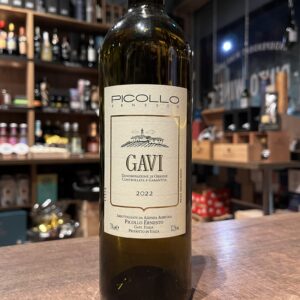 Picollo Gavi Ernesto is perched among the rolling hills that surround the town of Gavi. The climate here is much more mediterranean than in the north, benefiting from the constant maritime breezes, unique to the southern Piedmont. Picollo Ernesto’s vineyards sit near 260 meters above sea level in Rovereto di Gavi, one of the most prestigious area of the appellation. Our 16 hectares of vineyards are planted exclusively with Cortese, a hearty, high acid white varietal, perfectly suited for this area in northern Italy. Cortese thrives in difficult soil, dry climate, and full sun exposure, which Rovereto amply provides. Picollo’s vineyards are predominantly south-facing and the soils have a higher concentration of clay than marl, which allows for year-round water conservation, even in the peak of summer. Lorenzo Picollo founded the winery in 1945. The winemaking and day-to-day management was transferred to his son, Ernesto, and is now in the hands of his grandson, Gianlorenzo. Innovating along the way, Gianlorenzo continues to carry the family’s legacy forward with great success. Their lands are predominantly in the Rovereto zone, the historic Le Rive vineyards are over sixty years old instead their newest purchase of two hectares lies within the zone of Tassarolo. The grapes for all of Picollo’s wines are hand harvested. The winery itself has recently been modernized but the processes remain traditional, with sparing intervention in the winemaking and no artificial pesticides or herbicides used in the vineyards. With the intent of showcasing the Cortese in its purest form. All Gavi’s are fermented and aged exclusively in stainless steel. It is perfect with haute cuisine, ideal for fish dishes and aperitif
Picollo Gavi Ernesto is perched among the rolling hills that surround the town of Gavi. The climate here is much more mediterranean than in the north, benefiting from the constant maritime breezes, unique to the southern Piedmont. Picollo Ernesto’s vineyards sit near 260 meters above sea level in Rovereto di Gavi, one of the most prestigious area of the appellation. Our 16 hectares of vineyards are planted exclusively with Cortese, a hearty, high acid white varietal, perfectly suited for this area in northern Italy. Cortese thrives in difficult soil, dry climate, and full sun exposure, which Rovereto amply provides. Picollo’s vineyards are predominantly south-facing and the soils have a higher concentration of clay than marl, which allows for year-round water conservation, even in the peak of summer. Lorenzo Picollo founded the winery in 1945. The winemaking and day-to-day management was transferred to his son, Ernesto, and is now in the hands of his grandson, Gianlorenzo. Innovating along the way, Gianlorenzo continues to carry the family’s legacy forward with great success. Their lands are predominantly in the Rovereto zone, the historic Le Rive vineyards are over sixty years old instead their newest purchase of two hectares lies within the zone of Tassarolo. The grapes for all of Picollo’s wines are hand harvested. The winery itself has recently been modernized but the processes remain traditional, with sparing intervention in the winemaking and no artificial pesticides or herbicides used in the vineyards. With the intent of showcasing the Cortese in its purest form. All Gavi’s are fermented and aged exclusively in stainless steel. It is perfect with haute cuisine, ideal for fish dishes and aperitif -
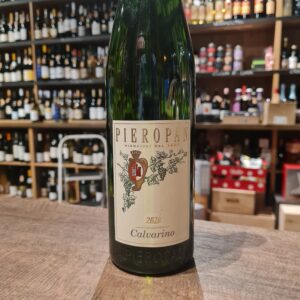 The history of this brand dates back to 1880, when this business was established in the Soave village in the reputed zone of Palazzo Pullici in Italy. Leonildo Pieropan, a physician from Soave, was well-aware of the potential of the soils in this region, because of his previous work experience in the family vineyards. He, along with his sons, Fausto and Gustavo, started working in the cellars in the 1950s and 60s to churn out impeccable quality, Italian wines that spoke a lot about the quality of their terroirs. Today, this business is run by the fifth generation of the Pieropan family, with the same dedication and winemaking philosophy. The Pieropan family believes in traditional winemaking principles. These are reflected in the way they maintain their vineyards. The local territory of these vineyards is given utmost importance and minimalistic intervention technique is followed in addition to organic viticultural practices. The three vineyards from where grapes are sourced for Pieropan wines are Calvarino, La Rocca and Garzon. Calvarino vineyard is the oldest of the three as it has been with the family since 1901. It is located right in the heart of the Soave area and is blessed with amazingly rich and fertile volcanic soils. It makes an excellent aperitif and partners a wide range of dishes, especially vegetable quiches, delicately-flavoured fish, shellfish and cheese soufflés
The history of this brand dates back to 1880, when this business was established in the Soave village in the reputed zone of Palazzo Pullici in Italy. Leonildo Pieropan, a physician from Soave, was well-aware of the potential of the soils in this region, because of his previous work experience in the family vineyards. He, along with his sons, Fausto and Gustavo, started working in the cellars in the 1950s and 60s to churn out impeccable quality, Italian wines that spoke a lot about the quality of their terroirs. Today, this business is run by the fifth generation of the Pieropan family, with the same dedication and winemaking philosophy. The Pieropan family believes in traditional winemaking principles. These are reflected in the way they maintain their vineyards. The local territory of these vineyards is given utmost importance and minimalistic intervention technique is followed in addition to organic viticultural practices. The three vineyards from where grapes are sourced for Pieropan wines are Calvarino, La Rocca and Garzon. Calvarino vineyard is the oldest of the three as it has been with the family since 1901. It is located right in the heart of the Soave area and is blessed with amazingly rich and fertile volcanic soils. It makes an excellent aperitif and partners a wide range of dishes, especially vegetable quiches, delicately-flavoured fish, shellfish and cheese soufflés -
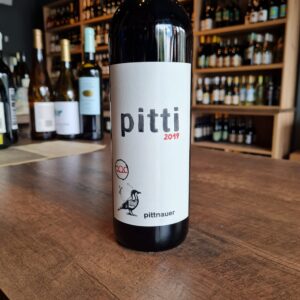 High on the hills of Austria there is more than just a lonely goat herd - there is also a fantastic winery, considered one of the country's best. Pittnauer has a long winemaking tradition in the region, and in 2006 moved to more biodynamic practices. The results are delicious, environmentally friendly wines with years of experience behind them. Now prepare yourself for some varieties you've probably never heard of - Pittnauer's Pitti Red Blend is made from blaufränkisch and Zweigelt grapes with a small quantity of Merlot added to the mixture. These varieties shine brightest in the Austrian climate, where they come together to make a stunningly delicious, full bodied wine reminiscent of spicy Shiraz. The ‘Pitti’ is a blend coming from vines that average 12-15 years in age and are planted on sandy clay mixed with limestone. Dark ruby in colour, the wine has tight tannins with black berries, cherries, cranberries and fresh acidic structure. Whispers of tobacco and liquorice. Ticks all the boxes of quality, drinkability and affordability and yumability.
High on the hills of Austria there is more than just a lonely goat herd - there is also a fantastic winery, considered one of the country's best. Pittnauer has a long winemaking tradition in the region, and in 2006 moved to more biodynamic practices. The results are delicious, environmentally friendly wines with years of experience behind them. Now prepare yourself for some varieties you've probably never heard of - Pittnauer's Pitti Red Blend is made from blaufränkisch and Zweigelt grapes with a small quantity of Merlot added to the mixture. These varieties shine brightest in the Austrian climate, where they come together to make a stunningly delicious, full bodied wine reminiscent of spicy Shiraz. The ‘Pitti’ is a blend coming from vines that average 12-15 years in age and are planted on sandy clay mixed with limestone. Dark ruby in colour, the wine has tight tannins with black berries, cherries, cranberries and fresh acidic structure. Whispers of tobacco and liquorice. Ticks all the boxes of quality, drinkability and affordability and yumability. -
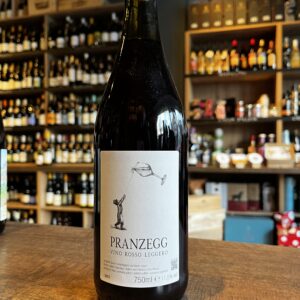 This is the kind of wine that all you need to do is to keep pouring! Delicious, joyuful, crunchy and always buy 2 as the first one will disappear. A playful and lively red that shows itself for what it is in every way: lots of fruit and some spice, a straight, agile and juicy mouthfeel, finesse, tension and elegance.
This is the kind of wine that all you need to do is to keep pouring! Delicious, joyuful, crunchy and always buy 2 as the first one will disappear. A playful and lively red that shows itself for what it is in every way: lots of fruit and some spice, a straight, agile and juicy mouthfeel, finesse, tension and elegance.


